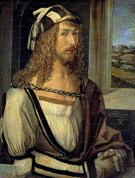Art, Art History and Design, School of
Date of this Version
2022
Citation
Published in HOW TO MAKE THE BODY: DIFFERENCE, IDENTITY, AND EMBODIMENT, ed. Jennifer L. Creech & Thomas O, Haakenson. Bloomsbury Visual Arts, London, 2002.
Abstract
This essay explores varied responses to the male body, including the phallus and its sixteenth- century covering, the codpiece, that existed over the past half millennium in the visual arts during which time discomfort coexisted with more neutral or positive representations of the human form. The essay will show that images indicate no monolithic attitude toward the body, clothed or not, in the centuries emerging from the Middle Ages, thereby agreeing with Bynum that a “cacophony of discourses” existed for many aspects of life, including responses to the body. Bynum’s linking of more general Medieval attitudes to those of our modern world rings true for the body as well.
The visual works explored indicate no linear attitude toward the body. Attitudes toward the body have waxed and waned and like fashion, what was in last year may be out the next. In Early Modern Northern Europe, the nude body appears not to have been represented as often as in Italy, nor has the direct representation of the body’s most intimate areas been included in the visual arts in the North as early or as often as in Italy. In addition, the number of extant images showing the male body explicitly has been vastly reduced because of a variety of factors over the centuries. 7 Changing taste, both cultural and personal, has vastly reduced the numbers of such images and altered them to conform to newer taste and approaches. Yet, enough visual art has survived to indicate that such sexual images did exist, how varied attitudes were among people living in earlier centuries, and how similar our attitudes are to theirs.
The two case studies presented here are centered in the early to mid sixteenth century in Northern Europe, where attention was paid to the male body, specifically the male member and its clothing. The first case looks at German prints showing the aroused male within biblical contexts. The second case involves a Netherlandish painting where the codpiece, the most brazen part of male dress, was altered because it drew attention to the male sex. Over time, the codpieces were eliminated to conform to changing taste.


Comments
Copyright © 2022 Alison Stewart.